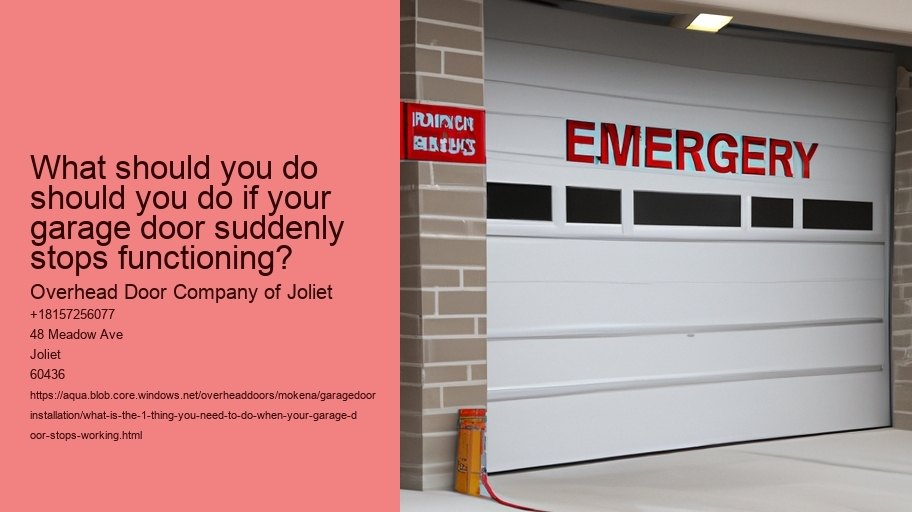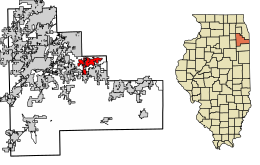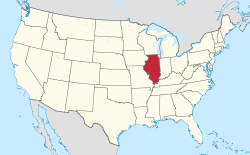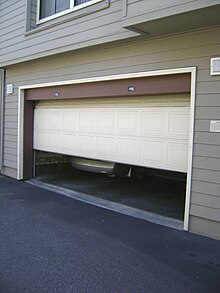Identify the Type of Garage Door and Opener
It is important to know the garage opener and door you have before you can start troubleshooting. What is the One Thing You Need to Do When Your Garage Door Stops Working? .
Garage doors generally fall into several categories based on their style and operation.The most popular kinds are roll-up, sectional and tilt-up doors.Sectional doors are made of panel sections connected with hinges, which allow the door to bend as it opens and closes on an upright track.Roll-up doors, often found in commercial spaces are made from sections of wood that are rolled up into a coil.
Doors that tilt up, on the contrary, are a single solid piece that tilts out and upwards when it opens.Importantly, you must identify the kind of garage door opener.The three most common types are belt-drive, chain drive, and screw-drive openers.Chain-drive openers, which utilize a metal chain to lift and lower the door, are durable and cost-effective, but they can also be noisy.Belt-drive openers work similarly, but they utilize a rubber belt, making them quieter and an ideal choice for attached garages.Screw-drive openers open and close the door with a threaded steel rod, offering a balance between the noise and the cost.
The next step is to examine your garage door opener and determine the type. Make sure to check the plug and breaker to confirm that the opener is running. Inspect the release cord for manual operation to make sure it's not been pulled. This could cause the door to be removed from the opener. Review the rollers and tracks of the door for damage or obstructions and remove any obstructions.
Lubricate moving parts as needed, as lack of lubrication could cause jamming or sticking.Resetting your opener will resolve any electronic malfunctions. Refer to the instruction manual of the model you're using to determine the precise instructions. Some openers can be reset with a push of a button while others require to be disconnected from the unit and after that, it must be re-plugged.
Spring tension is too high and could be dangerous to repair them without the right tools.
In the end, if your garage door suddenly stops working it means that it is
Be sure to look for any obstructions or debris
When your garage door suddenly stops working, it's both perplexing and frustrating particularly if it's part of your routine.
One of the first and most effective steps to consider when you are faced with this problem is to examine the door for any obstructions or debris.This easy, yet efficient action could be the answer to identifying the problem and restoring the functionality of your garage door.Garage doors are based by a set of rollers, tracks, and other moving parts that need to be free of hindrances to function smoothly.Over time dirt, leaves, tiny rocks, or any other debris can accumulate on the tracks or become stuck in the rollers.Even small obstacles can prevent the door from opening or closing properly.Therefore an inspection thorough of these components should be your first course of action.
Begin by examining the tracks on both the left and right sides of the door. Find obvious obstructions, or even debris buildup. If you find something unusual, like a twig, or a rock that is stuck in the track. Remove it carefully.
The issue may not be obvious at all times. To determine whether the issue remains there, run your hand down the track.What is the #1 Thing You Need to Do When Your Garage Door Stops Working? - budget
- log cabin
- Illinois Confederation
- leadscrew
After that, check the rollers and hinges.These components should be able to move without resistance.If they're sloppy or stuck, it might be an indication of accumulated grime or rust.In situations like this cleaning them and applying lubrication is often a solution to the issue.Use a gentle cloth or brush to remove any debris, then apply a suitable lubricant to ensure that they move freely.
It's also vital to look over the area surrounding the door itself.Sometimes things that are kept in the garage could accidentally slide or shift, obstructing the pathway of the door.Ensure that the area is cleared and that nothing is blocking the door's movement.
Make sure the sensors are working if the door does not open after you have removed any obstructions.
The sensors in modern garage doors may malfunction when they're dirty or not aligned properly.By maintaining a clean path and clearing out obstructions, you'll stay clear of having to call a professional fix a problem that is typically simple.
Inspect the Remote Control and Wall Switch
It's crucial to examine the wall switch and remote control.
These components are typically the culprits behind garage doors that aren't responding. making sure they are checked can save you time, and could even save you from costly expenses.First, consider the remote control.This handheld device is your primary tool for operating the garage door without direct physical interaction.Over time, remote controls can experience issues such as drained batteries, signal interference, or even internal damage.Start by replacing the batteries with new ones.It might seem simple, but dead batteries are a common reason for a garage door not responding.If the problem persists after replacing the batteries, try reprogramming the remote according to the manufacturer's instructions.Additionally, ensure that the remote is within the recommended range and that there are no obstructions blocking the signal.
The wall switch is a critical component of the garage door system.
If you feel at ease and comfortable, you can open the switch to look for any damaged or broken wires.In certain instances, the remote control and wall switch could appear to be functioning but the door remains unresponsive.This could indicate a problem with the garage door opener itself or other parts like the sensors or the door tracks.However, starting with the remote control and wall switch is a logical first step.
You can eliminate these issues before moving on to more difficult troubleshooting.The final step is to examine the wall switch and remote control whenever your garage door suddenly stops operating is a practical and straightforward approach.By checking these parts first, you'll be able to identify if the issue is within these easily accessible parts or if further examination is needed.This initial inspection does not only cut down on time, but also provides assurance that you've taken all the appropriate steps to identify the issue correctly.
Check the door's balance manually
It is frustrating and frustrating when your garage door stops working. Garage doors are an essential part of your home as it is a security feature, a shield against weather elements, as well as the ability to access your car as well as storage.
The first step you must do when confronted with the problem of a garage door that is not working is to examine the door balance.This simple yet effective procedure will help identify potential problems and prevent further damage to the door or any of its components.The stability of a garage door is critical to its proper functioning.A well-balanced door ensures that the door opener does not need to work harder than necessary, reducing the possibility of wear and tear on the motor and other parts.An uneven door, on the other hand could lead to more important issues over time, for instance, misalignment or broken springs, or even a complete system failure.Therefore checking the door's balance is a crucial method of diagnosis that can help determine if your issue is related to your door or opener mechanism.
Begin by disconnecting the garage door opener.
Most garage doors come with a release device that can be found on the red cord or handle. When the door has been unplugged from the motor, raise the door to waist height and then release it. A well-balanced door will remain at a steady level, or move slowly.It is best to contact an expert who can help you adjust the springs in order to ensure that your garage door is properly balanced. This won't only resolve the issue, but also increase the longevity and durability of your system.
Checking the balance manually of the garage door is a crucial first step to do when it suddenly stops functioning.
In addressing problems quickly and recognizing the importance of each, you can ensure that your garage door will run seamlessly and safely in future.Tracks and Rollers
If you're confronted with a garage door that suddenly refuses to work, your first instinct might be to panic or think of the most difficult technical issues.However, often the solution lies in a simple inspection of the tracks and rollers.This fundamental check can save you time and potentially costly repair costs making it the primary factor you must consider when your garage door stops working.
The rollers and tracks of your garage's operation system are essential. The tracks comprise the metal rails that help guide the door when it opens, and the rollers move through the tracks.
As time passes, these components could become dirty, misaligned or worn out, resulting into operating issues. Begin by visually inspecting the tracks for obstructions.Dust, grime, and even tiny debris may accumulate within the tracks, which causes the rollers to struggle as they travel across the path.Cleaning the tracks using a damp cloth can often help to solve these issues.Make sure you dry them thoroughly afterward to stop rust from forming.
What is the #1 Thing You Need to Do When Your Garage Door Stops Working? - budget
- ceiling
- one stop shop
- screw
The next thing to do is to verify the alignment of the tracks. Tracks must be straight and parallel. If they appear bent or are out of alignment the door may jam. You can push the misaligned track back into place using a rubber mallet. If the there are any significant damages, it's best to contact professionals who can re-align the tracks properly.
The inspection of the rollers is equally important.Over time, the rollers could be damaged or worn out particularly if they're made from plastic.
Metal rollers that have bearings are more durable and provide better performance.Utilizing silicone-based lubricants may reduce wear and friction. Make sure to lubricate the hinges and springs to ensure that your garage door works efficiently.
When you make sure that the components are well-lubricated and aligned It is possible to get the garage door back to its complete functionality.
Maintaining and inspecting these parts will also help to prevent future malfunctions. This will prolong the life of your garage system.Check for visible damage or wear
It can be frustrating and a hassle when garage doors stop working suddenly, especially if you're heading home, or trying to lock the home for the night.
The garage door is an intricate system that is made up of a variety of parts, such as springs, cables, rollers, and tracks, each of which plays essential roles in the seamless operation.Over time, these parts may wear out because of regular usage and exposure to environmental elements.
If you conduct a thorough visual check, you will be able to spot any obvious indications of damage that could be making the door malfunction.Start by inspecting the springs. They are responsible for lifting and lowering the door. Check for signs of wear and rust. A broken or worn spring could make the door unusable, which is why it's important to fix this issue as soon as possible. Next, check the cables for fraying and broken cables.
The door is yet another part that needs the attention of a professional. Look for visible cracks, warpings, or bends.
Furthermore, ensure that the sensors of the door are clear and aligned, as dirt or misalignment can interfere with their functions and result in the door not working.A visual inspection is valuable, but it's important to be aware that not all problems are immediately apparent. If you don't notice any obvious evidence of wear or damage you might need to speak with a professional to determine the problem.
This will not just aid in identifying the problem faster, but it will help you take action to restore your garage door's functionality.
You can extend the lifespan of your garage door by taking a proactive approach.Check the Springs and Cables
It is a frustrating experience when the garage door stops working. You must check the springs as well as the cables. These are the essential components to the operation of your garage and are the main culprits for a malfunctioning garage door.
Springs play a vital part in the functioning of the garage door by neutralizing its weight.When the door is in motion the springs take on most of the burden and allow the door to shut and open smoothly.There generally are two kinds of springs, torsion springs and extension springs.Torsion springs are positioned above the garage door, and they twist to store energy. While extension springs are located to both sides of the door and can stretch to create the force needed for the.
As time passes over time, these springs may wear out, break, or lose tension, which can lead to issues with operation.The cables could be damaged by wear and tear. They could fray or snap under the pressure.
If you're unsure if the cables or springs need to be adjusted, visual check them. Look for signs of wear or rust.
Safety is paramount when dealing with garage door components.
The cables and springs are in tension and could cause serious injury. If you do not have any experience with garage door repair, it is recommended to contact an expert.What is the #1 Thing You Need to Do When Your Garage Door Stops Working? - The Home Depot
- The Home Depot
- vehicle
- budget
In conclusion, when your garage door suddenly stops working, assessing the springs and cables is a key step in diagnosing the problem.Understanding their role and potential issues can help you determine whether a simple adjustment is needed or if professional intervention is required.Taking prompt action not only restores functionality but also ensures the safety and longevity of your garage door system.
You Should Call a Professional Technician
When your garage door stops working and it is not working, it could disrupt your day and even pose an security threat to your home.
While it is tempting to pull out a toolbox and attempt a do-it-yourself fix however, the best course of action is to call a professional technician.This option not only assures your safety, but also provides an effective and long-lasting solution to the problem.Garage doors are complex systems composed of various components such as springs, cables, tracks, and electronic parts.Each of these elements plays a crucial role in the door's operation, and a malfunction in any part can cause the entire system to fail.Without proper knowledge and experience, attempting to fix these issues can be dangerous.For instance, garage door springs are under high tension and can cause severe injury if handled improperly.Professional technicians are trained to deal with these risks safely, using the right tools and techniques to handle repairs.
Furthermore, a skilled technician provides expertise and experience the average person simply doesn't have.
They can quickly diagnose the issue and identify whether it's a minor problem, like a misaligned track, or something more serious, like a broken spring.This expertise not only saves you time but also prevents the potential for further damage that can occur with incorrect handling.Professionals also have access to high-quality parts and can ensure that replacements match the specifications of your existing garage door system, leading to better functionality and longevity.A skilled technician can be more cost effective in the long run. While a DIY option may appear less expensive initially but it could result in larger and more expensive repairs later.
Many technicians offer warranties on their services. This gives you assurance that in the event that something goes wrong, your problem is guaranteed.Finally, calling a professional will save you lots of time and hassle.Trying to master the intricate details of garage door mechanics, purchase the appropriate tools, and execute the repair could take several hours or days.In contrast, a professional can often resolve the issue quickly, and allow you to go back to normal without any unnecessary delays.
In the end, even though the desire to fix the garage door yourself could be powerful, contacting an expert technician is the most secure, most efficient, and in the end, the most sensible option.Their know-how in locating quality parts, and their ability to perform swift and accurate repair work will make sure that your garage door is back and running at a high level to protect your home and


















